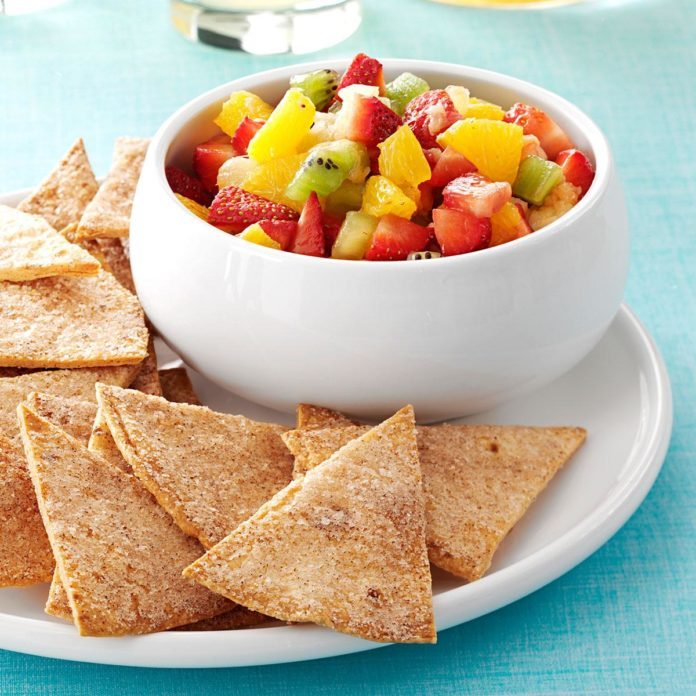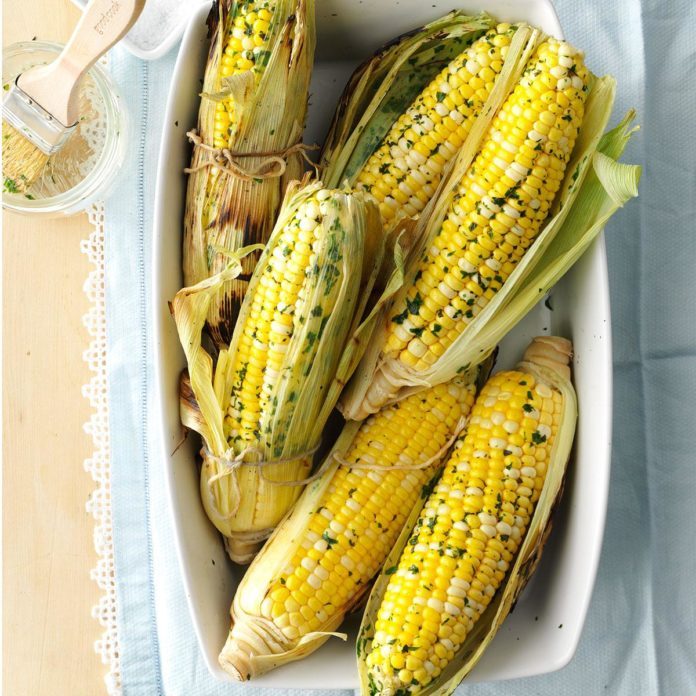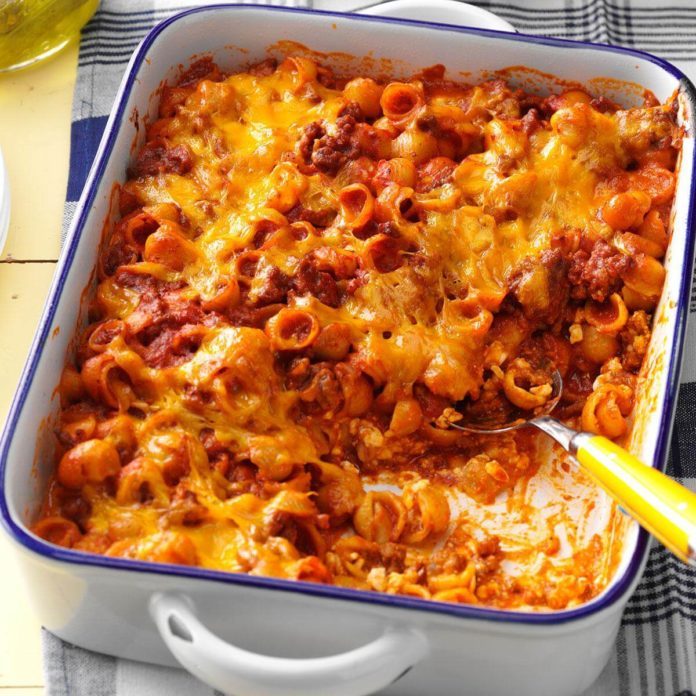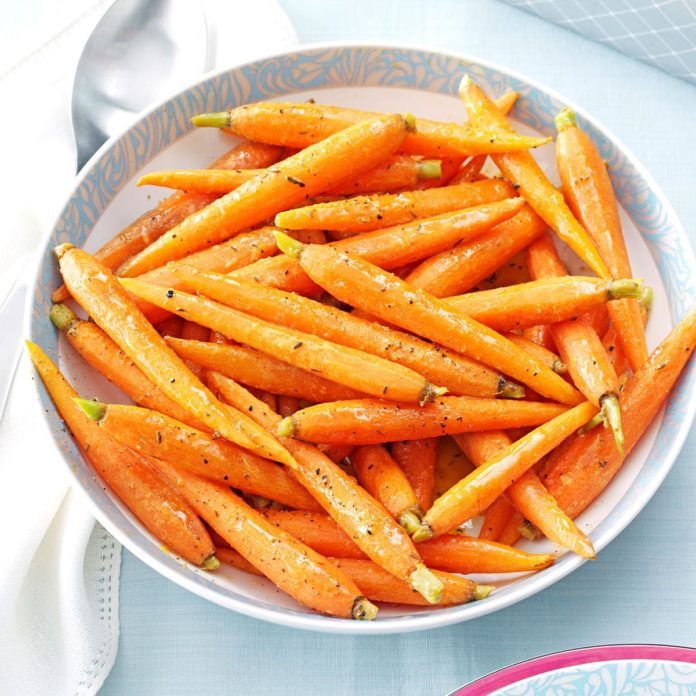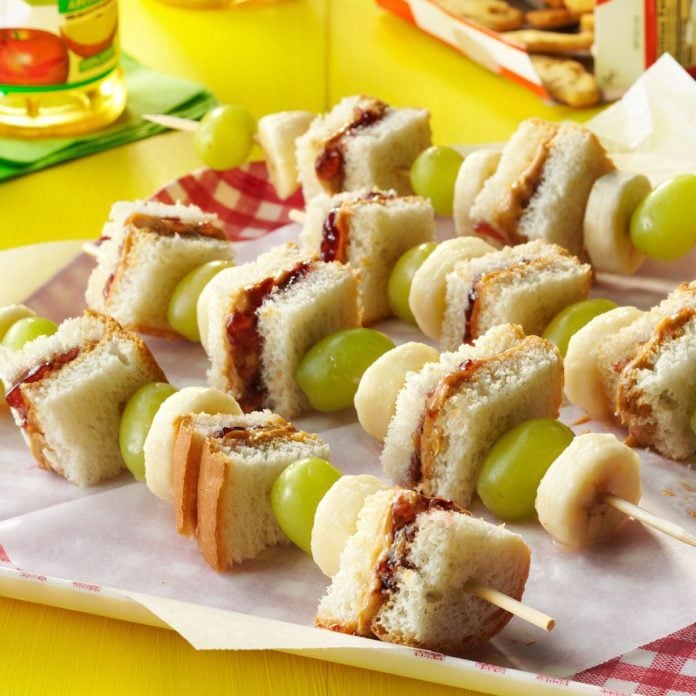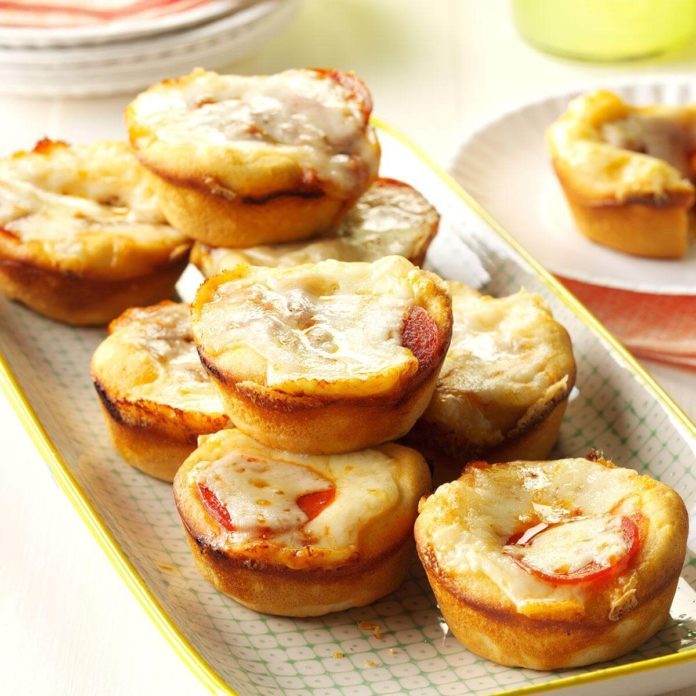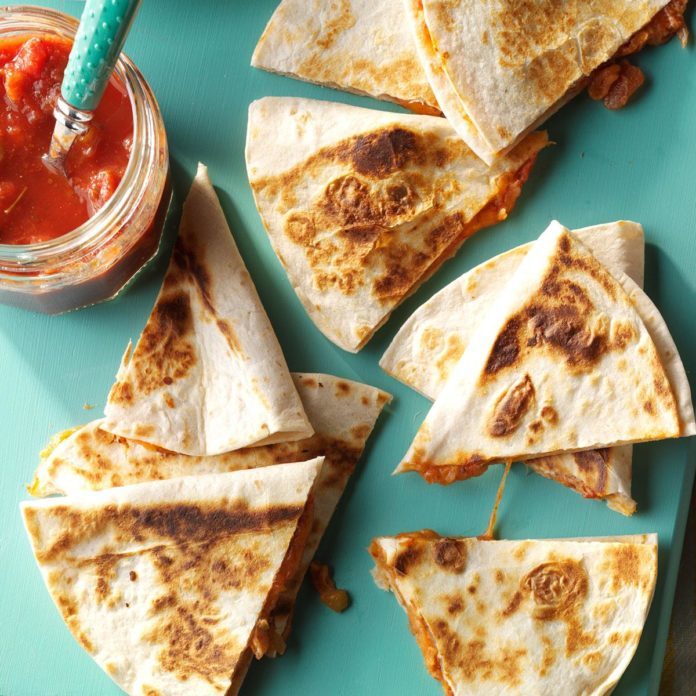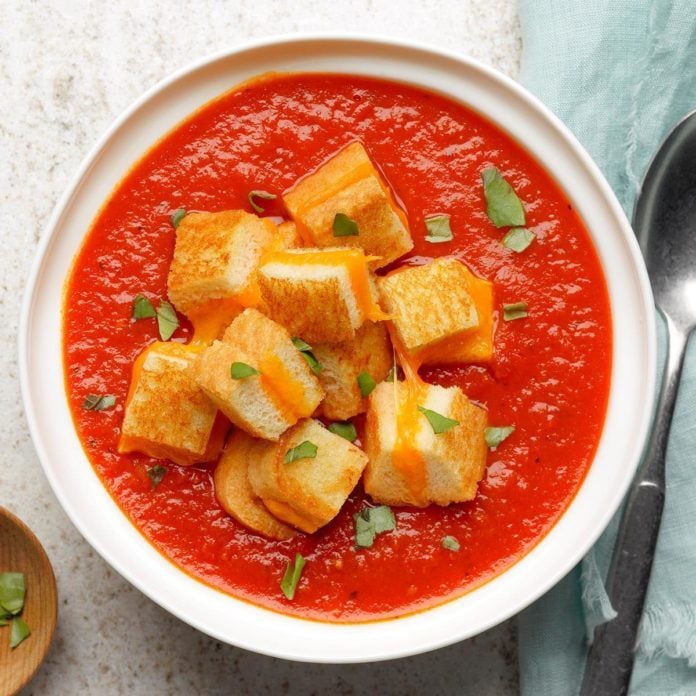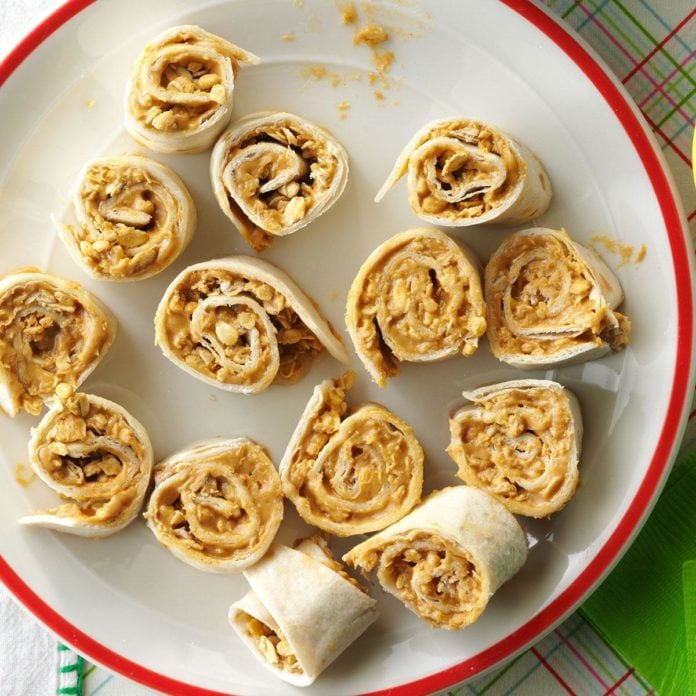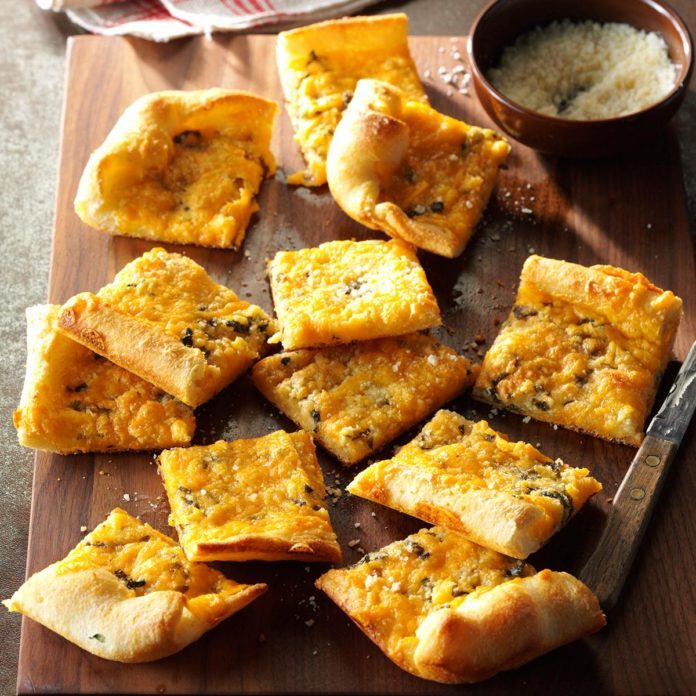When it comes to feeding their littlest ones, all parents know that mealtimes are a balancing act. Between convenience, nutrition, taste and affordability, parents face quite the task. (Though as they get older, snacking gets a little easier!)
But as a parent, you always ask yourself how you can provide your little ones with healthy, affordable meals that also won’t get spit back in your face or dribbled all over the high chair. Well, I have a few tips for making baby food that won’t break the bank. Check out a few of my favorite baby food recipes—all approved by my daughter.
Psst: Eating this food just may make Baby smarter.
4 Ways to Make Your Own Baby Food
Brown Rice Cereal for Babies
When you want to make your own baby food, rice is perhaps the most versatile ingredient to use. It’s inexpensive and can be made in large batches. It’s also healthy, containing phosphorus, selenium, magnesium, vitamin B6, niacin and thiamin, just to name a few benefits (no wonder it’s a great foundation for our favorite meals in a bowl!). Rice can also be mixed with other mushy baby food to add heft to meals without sacrificing flavor.
Step 1: Mill
Break the rice down into a coarse powder with a food processor (here’s our Test Kitchen’s favorite brand). A blender with a milling blade will work, too.
Step 2: Cook
Cook the rice over the stove using 4 cups of water for every 1/2 cup of rice. Bring the water up to boiling, then reduce the heat to a simmer for 20 minutes.
Step 3: Serve or store
Once cooked, your brown rice will keep in the fridge up to three days or can be frozen up to a month. This is a great basic recipe and it can be easily mixed into any of the following baby-inspired dishes.
Pureed Produce for Babies
The crossroads of healthiness and low cost intersect at a catch-all baby food recipe technique for produce. To puree food, you’ll need a food processor, blender or immersion blender (here’s how those last two are different). Any of these is a great investment if you plan to make baby food regularly. By using these machines, you can quickly puree most veggies and fruits, and when you’re done making baby food, put it to use making pumpkin puree or gazpacho!
If you’re wondering what you can puree for baby, the answer is: almost anything. Fruits like apples, pears and peaches can be added to the puree without cooking and require little or no water to thin out for the right baby food consistency. Cooked vegetables—sweet potatoes, carrots, you name it—all work well once they’re steamed. But let’s break this down into steps.
Step 1: Cook (if necessary)
Like I said, most fruits will not need to be cooked ahead of time, but tougher veggies should be cooked. I think steaming is the best method because it helps the produce hold onto the most nutrients, but baking and boiling both get the job done. I avoid the microwave since it can aggressively break down the produce, but it works if you’re in a pinch.
Step 2: Puree
Move the cooked vegetable into the blender and puree. Easy.
Step 3: Thin it out
This is not always necessary, but thinning vegetable mash makes it easier for babies, especially those around the six-month mark, when they first begin solids. As you puree, add water slowly to create a smoother, more easily digested consistency. (You can even use the water your veggies steamed in.) Feel free to mix so it’s thicker than store-bought baby food, but don’t let it get thinner. If the food is too watery, it can taste slimy and won’t keep as well in the fridge.
Some tips: A pinch of salt or dab of butter is useful for making green vegetables like spinach or peas more palatable. Do not use butter before your child starts dairy. Breastmilk or formula can also be added during the thinning process—the familiar taste is comforting.
Soup for Babies
Soup is a great baby food option because it gives parents the freedom to add a variety of vegetables. I recommend using veggies that soften easily, like celery, for kids who are just starting solid foods.
Step 1: Cook
Add 2 tablespoons of uncooked pastina (find that here) to 3 cups of low-sodium chicken broth. Bring to a boil and stir while cooking for 8 minutes.
Step 2: Add veggies
Celery can be added directly to the broth. Or feel free to soften carrots or small chicken squares by cooking them separately and adding after the broth boils.
Step 3: Serve or store
Serve the soup while warm. The broth and noodle mixture keeps in the fridge for three days or in the freezer up to a month.
Squash and Potatoes for Babies
Squash and potatoes are a fantastic flavor-packed, vitamin A-filled option for even your fussiest tyke. These ingredients create a safe go-to recipe, especially for filling hungry bellies before nap time. This recipe works for children comfortable with chewy, solid foods and it serves as a great snack until—well, my daughter is in first grade and she still loves ’em!
If your baby is just starting solids, you can puree the mix. And if your pantry looks a little bare, this recipe also works with just potatoes or squash.
Step 1: Prep the potatoes
Cut your squash and potatoes into small cubes. Season with cinnamon and a dash of rosemary.
Step 2: Roast
Drizzle the cubes with olive oil and roast at 400 degrees for 25 minutes, or until tender and browned.
Step 3: Snacktime
Once cooled down, these are great snacks for kids who are just starting slightly more solid foods. If you’re child is still in the soft-foods-only stage, pop this recipe in the blender to smooth it out. It will keep in the refrigerator for up to five days.
With a little extra prep and a smidge of time (during a nap?), you can have nutritious, homemade baby food that is perfect for your tiniest tots.
Be Prepared with These Recipes for Toddlers
This creamy mac 'n' cheese definitely doesn't come from a box! Fresh veggies add crunch and color and will leave everyone saying, "More, please!" —Marsha Morril, Harrisburg, Oregon
Get Recipe
I first made this fresh, fruity salsa for a family baby shower. Everyone wanted the recipe. Now, someone makes this juicy snack for just about every family gathering—and I have to keep reminding everyone who introduced it! —Jessica Robinson, Indian Trail, North Carolina
Get Recipe
These gooey grilled cheese sandwiches taste great for lunch with sliced apples. And they're really fast to whip up, too. Here's how to make grilled cheese the right way. —Kathy Norris, Streator, Illinois
Get Recipe
Fresh green broccoli turns tangy and tasty when roasted with lemon juice and pepper. A sprinkle of almonds adds crunch. —Liz Bellville, Jacksonville, North Carolina
Get Recipe
Almost as spectacular as the fireworks, this lovely salad makes quite a "bang" at our July Fourth meal. It's exciting to serve, and our guests loved the cool fruity and creamy layers. This salad really added to my patriotic theme. —Sue Gronholz, Beaver Dam, Wisconsin
Get Recipe
Mom fixed this Swedish meatball recipe for all sorts of family dinners, potluck suppers and PTA meetings. The scent of browning meat is intoxicating. Add to that the sweet smell of onions caramelizing, and everyone’s mouth starts watering. —Marybeth Mank, Mesquite, Texas
Get Recipe
I'd never grilled corn until last summer when my sister-in-law served it for us. What a treat! So simple, yet delicious, grilled corn is now a must on my summer menu. —Angela Leinenbach, Mechanicsville, Virginia
Get Recipe
Since I found this quick-to-fix recipe a few years ago, it's become a regular part of my menu plans. Everyone loves the combination of sloppy joe ingredients, shell pasta and cheddar cheese. —Lynne Leih, Idyllwild, California
Get Recipe
I love when an entire meal can be cooked outside on the grill and I don't need to heat up the kitchen. These grilled sweet potatoes meet that requirement and are healthy, too! —Natalie Knowlton, Kamas, Utah
Get Recipe
My husband goes wild for my mini meat loaves, but this family-favorite recipe wasn’t very healthy when I first received it. The Taste of Home Test Kitchen experts slashed the calories and fat while keeping the original’s tender and delicious qualities. —Jodie Mitchell, Denver, Pennsylvania
Get Recipe
Asparagus never tasted so good! Simply seasoned with butter and green onions, they taste fresh and keep their bright green color, too. They're so good, you might want to make extra. This is how to cook asparagus in the oven. —Jody Fisher, Stewartstown, Pennsylvania
Get Recipe
My muffins are a frequent request from everyone in the family. I usually make them on Sunday nights, so when we're running late on weekday mornings, the kids can grab these to eat on the bus. —Irene Wayman, Grantsville, Utah
Get Recipe
On busy days, it's a comfort to know that my family can sit down to dinner minutes after we walk in the door. Double it to wow at a potluck. This recipe works in a slow cooker, too. —Virginia Krites, Cridersville, Ohio
Get Recipe
These fruity kabobs are so refreshing on a warm day. They're also a quick and easy meal for get-togethers. —Kathleen Hedger, Godfrey, Illinois
Get Recipe
For many years, I’ve made these cheesy broccoli squares for tailgate parties, book club and other events. They’re excellent served warm or hot, but we enjoy them cold, too. —Veronica Downen, Crystal Beach, Florida
Get Recipe
I'm one of 13 children, so making a recipe that everyone likes can be a challenge. This one was a Saturday-morning special that we all loved. —Keenan McDermott, Springfield, Missouri
Get Recipe
Everyone at my table goes for this feel-good soup. It’s quick when you’re pressed for time and beats fast food, hands down. —Darlis Wilfer, West Bend, Wisconsin
Get Recipe
Here's a wonderful accompaniment to just about any main dish, whether for a holiday or not. The carrots are sauteed in a sweet orange butter sauce with a unique blend of spices. —Angela Bartow, Cato, Wisconsin
Get Recipe
My kids and all of their friends clamor for the large, chewy pretzel rods. They are fantastic fresh from the oven. —Lisa Shaw, Burnettsville, Indiana
Get Recipe
You can prepare this snackable pizza in just 10 minutes! It's a great way to sneak in those daily servings of fruit. —Dalynn Dowling, Grand Forks AFB, North Dakota
Get Recipe
One of my mom's favorite chicken recipes used fresh sage. Her version was smothered with gravy, but we like these panko-crusted tenders as they are. —Deb Perry, Traverse City, Michigan
Get Recipe
I always try to come up with new ways to serve lunch to my kids. This recipe was a hit! —Sara Martin, Brookfield, Wisconsin
Get Recipe
This streamlined side dish is a great way to serve fresh beans from the garden. It's simple yet looks elegant. With its mild seasonings, it complements most any dish. —Tammy Neubauer, Ida Grove, Iowa
Get Recipe
This berry-filled salad may take some time to prepare, but one taste and you'll agree it's worth the extra effort. I treat family and friends to this dish on special occasions. —Linda Goulet, Hadley, Massachusetts
Get Recipe
I brought this super easy recipe to a school potluck once and it was gone in no time. I’ve been asked to bring it to every function since. —Jessica Maxwell, Englewood, New Jersey
Get Recipe
Bite-size french toast "fingers" are great for a buffet—and kids love them. —Mavis Diment, Marcus, Iowa
Get Recipe
Young relatives were coming for a Christmas party, so I wanted something fun for them to eat. Instead, the adults devoured my mini mac and cheese. —Kate Mainiero, Elizaville, New York
Get Recipe
Our three kids just love the fun wagon wheel shapes in this easy recipe. The mildly seasoned sauce is something that even the pickiest eaters enjoy. For variety, try it with Italian sausage instead of ground beef. —Janine Freeman, Blaine, Washington
Get Recipe
Not only do my grandchildren love these cheese-and-bacon filled hot dogs, but they enjoy helping put the meal together, too. It's the perfect solution to a last-minute lunch. —Lyletta Searle, Morgan, Utah
Get Recipe
Growing my own vegetables and herbs helps keep things fresh in the kitchen, but frozen peas make this side is a breeze to prepare. —Tanna Richard, Cedar Rapids, Iowa
Get Recipe
When you have these fun-to-make mini pizzas, it's no challenge finding lunch fare that the kids enjoy. Plus they pack nicely in sandwich bags and travel well, so there's no mess. —Rhonda Cliett, Belton, Texas
Get Recipe
Turn carrot sticks into fun "fries" with a happier health profile by popping them in the oven and serving them fry-style. —Taste of Home Test Kitchen
Get Recipe
We serve these quesadillas as chili dippers or load them up with salsa and sour cream for a super starter. —Terri Keeney, Greeley, Colorado
Get Recipe
When our son, Chris, wants something other than cold cereal in the morning, he whips up these eggs. Cheese and evaporated milk make them especially good. They're easy to make when you're camping, too. —Chris Pfleghaar, Elk River, Minnesota
Get Recipe
A few simple touches and a blast of heat enhance the natural sweetness of fresh veggies. —Donna Lamano, Olathe, Kansas
Get Recipe
Prepared sauce accents this warm chicken pesto pasta. Keep pesto in the freezer for the next time you have leftover chicken. —Taste of Home Test Kitchen
Get Recipe
When serving a crowd, double or quadruple this guacamole. The onion, tomato and mango can be chopped in advance. Add avocado just before serving. —Diana Nienberg, McComb, Ohio
Get Recipe
I wanted a healthier approach to fish sticks and developed a baked tilapia with a slightly peppery bite. My husband and sons love the crispy coating. —Candy Summerhill, Alexander, Arkansas
Get Recipe
After craving tomato soup, I decided to make my own. My sister Joan likes it chunky-style, so she doesn't puree. Serve it with a grilled cheese sandwich. —Marian Brown, Mississauga, Ontario
Get Recipe
I came across this easy and tasty snack while searching online for healthy munchies for kids. Great for after school, it's really quick to make and filling enough to hold the kids until dinner. To satisfy heftier appetites or to serve as a power lunch, cut each tortilla into fewer pieces or provide one per child. The recipe is easy to increase as needed. —Mary Haluch, Ludlow, Massachusetts
Get Recipe
Unless you plan to make two, don't count on leftovers. As an appetizer or side, this cheesy flat bread will be devoured in less time than it takes to bake. And that's not long! —Suzanne Zick, Maiden, North Carolina
Get Recipe
The best way to get kids interested in cooking and eating right is to let them help. These apple and peanut butter "sandwiches" are one fun way to pique their interest and kitchen creativity. —Shirley Warren, Thiensville, Wisconsin
Get Recipe
My kids love sausage and pancakes but making them during the week was out of the question. I bought the frozen variety on a stick but wasn't keen on the calories, additives or price. This version of pigs-in-a-blanket is a tasty, thrifty alternativee. —Lisa Dodd, Greenville, South Carolina
Get Recipe
This down-sized pizza tastes just as good as its bigger counterpart. Frozen dinner rolls make a time-saving convenient crust that still provides delicious, from-scratch flavor. Your child can help roll out the dough, spread the sauce and sprinkle on the toppings. —Taste of Home Test Kitchen
Get Recipe
Want a family-friendly side dish? This colorful medley is kid-pleasing and a great way to encourage healthy eating. —Sharon Ricci, Spooner, Wisconsin
Get Recipe
Whether I'm cooking for company or my own brood of five children, this delicious casserole is always well-received. —Eileen Nilsson, Plymouth, Massachusetts
Get Recipe
Take a bite out of summer boredom with this kid-friendly food project. —Taste of Home Test Kitchen
Get Recipe
Note: Every product is independently selected by our editors. If you buy something through our links, we may earn an affiliate commission.
The post How to Make Baby Food (It’s Easier Than You Think!) appeared first on Taste of Home.
Jeremy Jusek

